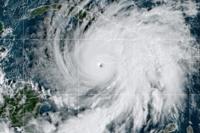The Defense Department will close a massive Navy fuel storage facility in Hawaii that leaked into the tap water in Pearl Harbor, sickening and displacing thousands of military families and civilians, the department announced Monday.
"This is the right thing to do," Defense Secretary Lloyd Austin said in a written statement released Monday afternoon.
"Centrally-located bulk fuel storage of this magnitude likely made sense in 1943, when Red Hill was built," Austin continued. "And Red Hill has served our armed forces well for many decades. But it makes a lot less sense now."
Read Next: How Believers in the Paranormal Birthed the Pentagon's New Hunt for UFOs
Prior to Monday, the Pentagon had resisted Hawaiian demands to close the Red Hill Bulk Fuel Storage Facility, filing an appeal in court against Hawaii's order to drain the fuel that argued the department needed more time to study the long-term prospects of the facility.
In late November, military families at Joint Base Pearl Harbor-Hickam and Aliamanu Military Reservation began reporting their water smelled like fuel and had a visible, oily sheen.
The Hawaii Department of Health and the Navy later confirmed the water was contaminated by fuel spilled from the Red Hill storage facility earlier in the month.
The spill displaced thousands of military families and civilians, while others brought in outside water to stay in their homes. Thousands have also been treated for nausea, headaches, rashes and other conditions.
Hawaiian officials, including the state's U.S. senators and representatives, have been pressuring the Defense Department to comply with Hawaii's defueling order. Congress joined in approving $100 million last month for the Pentagon to follow the order.
"I have said from day one that ensuring the health and safety of the residents of Oahu is my top priority and I share the community's big sigh of relief with this news," Sen. Mazie Hirono, D-Hawaii, said in a statement Monday applauding the Pentagon's announcement.
"There is a lot of work to do, including defueling the tanks safely and the long term cleanup efforts that will be required to close down the facility," Hirono added. "I will continue to work very closely with the DoD, the Environmental Protection Agency and the State of Hawaii to make sure this happens."
Hawaii's order called for the Navy to submit a plan to drain the fuel at Red Hill within 30 days.
But a timeline laid out by the Pentagon on Monday could have the process stretching longer than a year.
Operations at Red Hill have been suspended since December, but the facility can't be defueled until it is up and running again, Pentagon press secretary John Kirby told reporters. An assessment team expects to have a report by the end of the April on how to safely get the facility operational again, he added.
Under a memo signed by Austin on Monday, the Navy and the Defense Logistics Agency have until May 31 to deliver a plan of action to defuel.
Once the plan is in place, the Pentagon estimates defueling could take up to 12 months.
After the facility is defueled, the department will work on environmental mitigation, Kirby said.
Kirby did not have a cost estimate. Sen. Brian Schatz, D-Hawaii, a member of the Senate Appropriations Committee who took credit for securing the $100 million approved last month, previously described that funding as a first round.
"In order to implement this decision, we're going to have to provide additional resources and hold DoD's feet to the fire through congressional oversight," Schatz tweeted Monday. "I will continue to work with our federal and state partners to see this through."
Red Hill has 20 tanks -- 14 of which are filled right now -- that each can hold up to 12.5 million gallons of fuel used for ships and planes that support U.S. military operations throughout the Pacific region. The facility was built into the side of a mountain during World War II to protect it from attack.
With the facility being drained, fuel reserves will instead be located at unspecified locations on land and at sea throughout the Indo-Pacific region, according to Austin's memo.
The memo also stressed the need to "care for affected military families and the people of Hawaii." But the department did not detail Monday any new assistance that might be provided to them.
"We owe you the very best health care we can provide, answers to your many questions, and clean, safe drinking water," Austin said in his statement. "Quite frankly, we owe you a return to normal. And you have my commitment to that end."
-- Rebecca Kheel can be reached at rebecca.kheel@military.com. Follow her on Twitter @reporterkheel.
Related: DoD Appealing Order to Drain 100 Million Gallons of Fuel from Honolulu Tank Above Drinking Water














